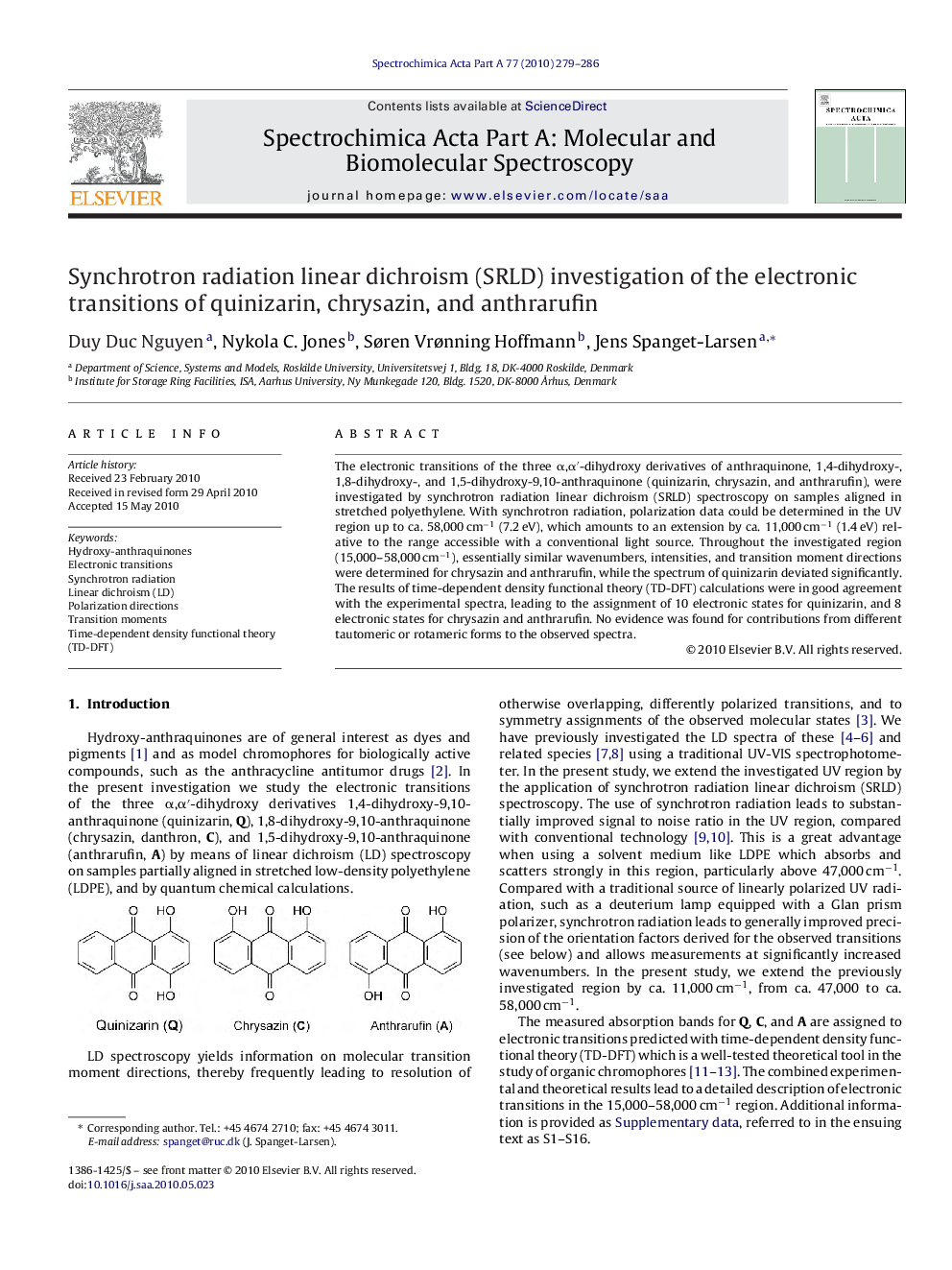| Article ID | Journal | Published Year | Pages | File Type |
|---|---|---|---|---|
| 1234065 | Spectrochimica Acta Part A: Molecular and Biomolecular Spectroscopy | 2010 | 8 Pages |
The electronic transitions of the three α,α′-dihydroxy derivatives of anthraquinone, 1,4-dihydroxy-, 1,8-dihydroxy-, and 1,5-dihydroxy-9,10-anthraquinone (quinizarin, chrysazin, and anthrarufin), were investigated by synchrotron radiation linear dichroism (SRLD) spectroscopy on samples aligned in stretched polyethylene. With synchrotron radiation, polarization data could be determined in the UV region up to ca. 58,000 cm−1 (7.2 eV), which amounts to an extension by ca. 11,000 cm−1 (1.4 eV) relative to the range accessible with a conventional light source. Throughout the investigated region (15,000–58,000 cm−1), essentially similar wavenumbers, intensities, and transition moment directions were determined for chrysazin and anthrarufin, while the spectrum of quinizarin deviated significantly. The results of time-dependent density functional theory (TD-DFT) calculations were in good agreement with the experimental spectra, leading to the assignment of 10 electronic states for quinizarin, and 8 electronic states for chrysazin and anthrarufin. No evidence was found for contributions from different tautomeric or rotameric forms to the observed spectra.
